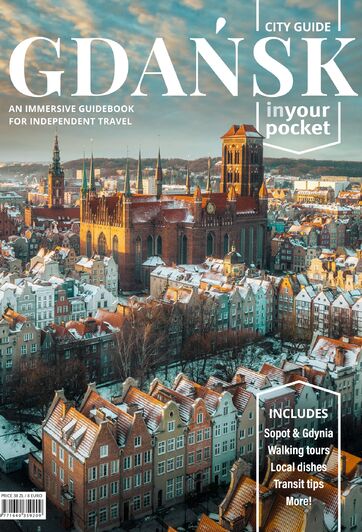Scottish Gdańsk
more than a year agoFrom the late 14th century onwards the Baltic region enjoyed strong trade links with Scotland, and recent evidence has confirmed that many of the timbers used in the building of Queen Mary’s House in St Andrews were shipped from the Gdańsk region some 600 years ago. Religious tolerance, an escape from poverty and famine, and the promise of adventure and riches prompted many Scots to seek a future in Gdańsk.
Many arrived as traders, and the contribution of these men to Polish, Prussian and Scottish culture cannot be underestimated. Robert Gordon made a fortune through the Aberdeen-Danzig trade route, and donated some GBP 10,000 to the foundation of a hospital in his hometown. Four hundred years on the building still stands, now better known as the Robert Gordon University. William Forbes, also known under the colourful sobriquet of Danzig Willie, built the spectacular Craigievar Castle on the back of his trading profits. Sir Robert Skene’s generous investments helped elevate Aberdeen to becoming the largest granite quarry on earth.
By the 17th century Gdańsk was home to an estimated 30,000 Scots. A legion of peddlers emigrated from Scotland, travelling around Poland selling everything from shotguns to furs. To this day, the local Kashubian word for a business traveller is ‘szot’. Others joined military factions, and Gdańsk was the first town in Poland to have a regiment of Scottish mercenaries. Though this particular band of men were hired to fight against the Polish army in a dispute over duties to the King, many Scottish soldiers went on to distinguish themselves in the name of the Polish crown, namely in campaigns against the Turks, Swedes and Russians; the brave Colonel Ketling is an important character in author Henryk Sienkiewciz’s famous Trilogy (With Fire and Sword, The Deluge and Sir Michael). The 16th century King Stefan Batory exclusively used Scottish merchants to provide for the army and Royal Court, while in the 17th century Alexander Chalmers became one of Warsaw’s best loved mayors.
Life was not always easy for the immigrants. A reputation for drunkenness led to numerous difficulties with the conservative local populace, and there were several vicious trade wars involving England, Scotland and Poland. Though the Scottish immigrants eventually became integrated into the Polish community, their legacy has been long lasting. In his History of Prussia Dr Schmidt noted that ‘the peculiar compound of stubbornness and shrewdness which characterises the people of East Prussia has its root in the natural disposition of the Scot’. It would appear that the Scots not only transformed the economic fortunes of Gdańsk, but the very character of the people.
Scottish writer, broadcaster and author, Billy Kay, states in his book The Scottish World: A journey into the Scottish Diaspora that 'During the 17th century more Scots went to the Baltic lands of Poland and Prussia and from there eastwards into Lithuania and Russia than took part in the massive plantation and settlement of Ulster!' You can read more about that on his website.



Comments